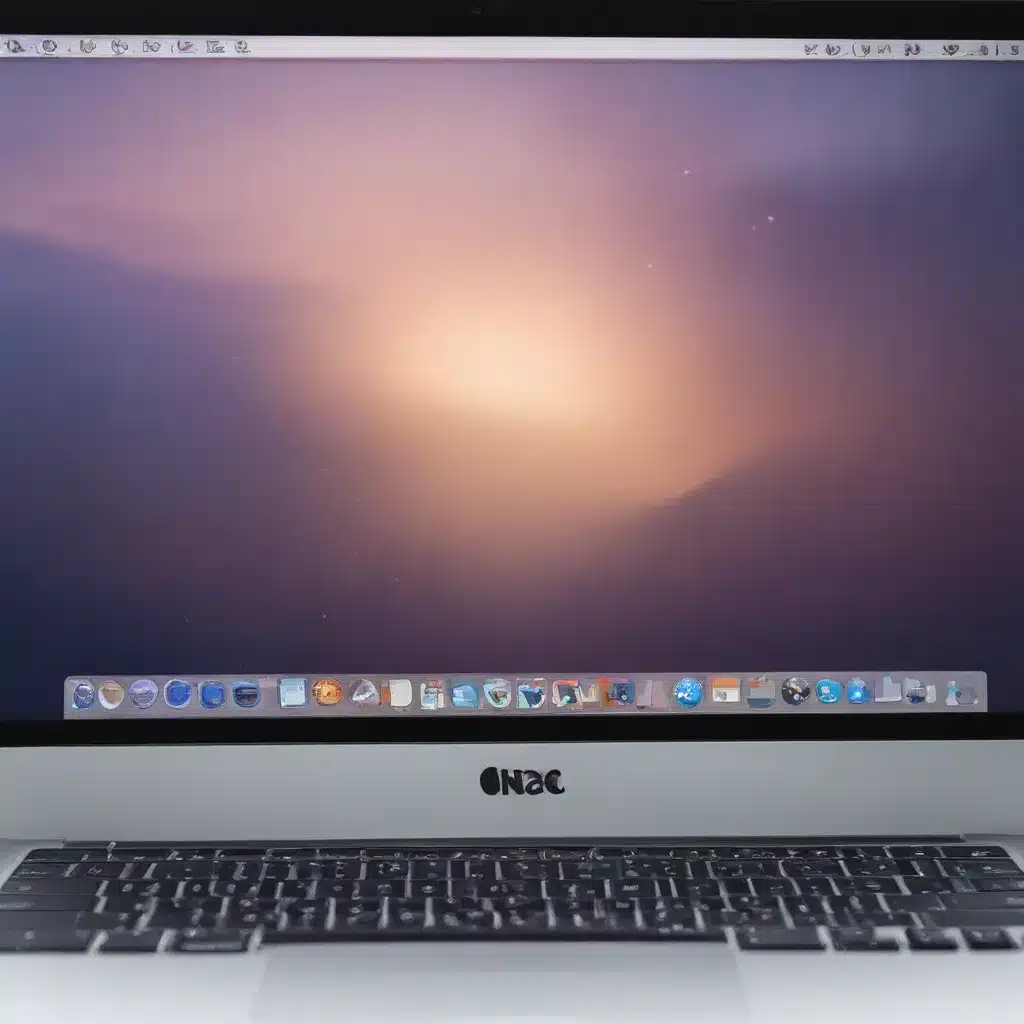The Dreaded Mac Freeze: Let’s Get You Back in Business
Oh, the woes of a frozen Mac – it’s like being trapped in a digital ice age, with your cursor stubbornly stuck and your precious files held hostage. But fear not, my tech-savvy friends, for I have the solution to your frosty predicament.
In this comprehensive guide, I’ll walk you through the various methods to force restart your Mac, from the classic keyboard shortcut to the more advanced Terminal trickery. We’ll also dive into some preventative measures to keep those pesky freezes at bay, so you can enjoy a smooth-sailing computing experience.
The Keyboard Shortcut: Your Quick-Fix Solution
When your Mac decides to take an impromptu nap, the first course of action is the tried-and-true keyboard shortcut. Simply hold down the Command, Control, and Power buttons (or the Power button, if you’re on a MacBook without a physical button) for about 10 seconds, and voila! Your Mac should spring back to life, feeling refreshed and ready to tackle your workload. [1]
But what if your Mac is so frozen that even the keyboard shortcut fails to rouse it? Fear not, for we have a more forceful solution up our sleeves.
The Terminal Trick: When All Else Fails
If your Mac is completely unresponsive, it’s time to bring out the big guns – the Terminal. This powerful command-line interface is like a digital Swiss Army knife, capable of performing all sorts of wizardry on your computer.
To force restart your Mac using Terminal, follow these steps:
- Open the Terminal app, which you can find in the Utilities folder of your Applications.
- Type the command
sudo shutdown -r nowand hit Enter. - Enter your administrator password when prompted.
Voila! Your Mac should begin the shutdown process and restart itself, like a phoenix rising from the ashes. [1]
Drain the Battery: A Shocking Solution
If you’re feeling particularly adventurous (or desperate), there’s another trick up our sleeve – the “Drain the Battery” method. This involves letting your Mac’s battery completely deplete, then recharging it to recalibrate the power management system.
To do this, simply unplug your Mac from the power source and let it run until the battery is completely drained. Once it’s down to 0%, plug it back in and let it fully recharge. This process can sometimes work wonders in resuscitating a frozen Mac, like a cold splash of water on a sleepy face. [1]
Preventative Measures: Keep Those Freezes at Bay
Of course, the best way to deal with a frozen Mac is to prevent it from happening in the first place. Here are some proactive steps you can take to keep your computer running smoothly:
- Declutter and Optimize: Use a tool like CleanMyMac X to clear out unnecessary files, cache, and other junk that can slow down your system. [1]
- Monitor Your CPU: Apps like App Tamer and iStat Menus can help you keep an eye on your Mac’s CPU usage, allowing you to identify and address resource-hogging processes. [1]
- Keep it Updated: Regularly check for macOS and app updates, as they often include performance improvements and bug fixes that can help prevent freezes. [1]
By following these simple tips, you can keep your Mac running like a well-oiled machine, and say goodbye to those frustrating freezes for good.
So, the next time your Mac decides to take an unscheduled coffee break, don’t panic – just grab this handy guide, and let’s get your computer back on track, one force restart at a time!
[1] Setapp, “How to Restart MacBooks: The Ultimate Guide,” https://setapp.com/how-to/how-to-restart-macbooks
[2] Apple Discussions, “Setapp – The all-in-one platform for your Mac,” https://discussions.apple.com/thread/254828913
[3] OWC, “Tech Tip: How to Force Quit a MacBook Pro with Touch Bar,” https://eshop.macsales.com/blog/42219-tech-tip-how-to-force-quit-a-macbook-pro-with-touch-bar/













